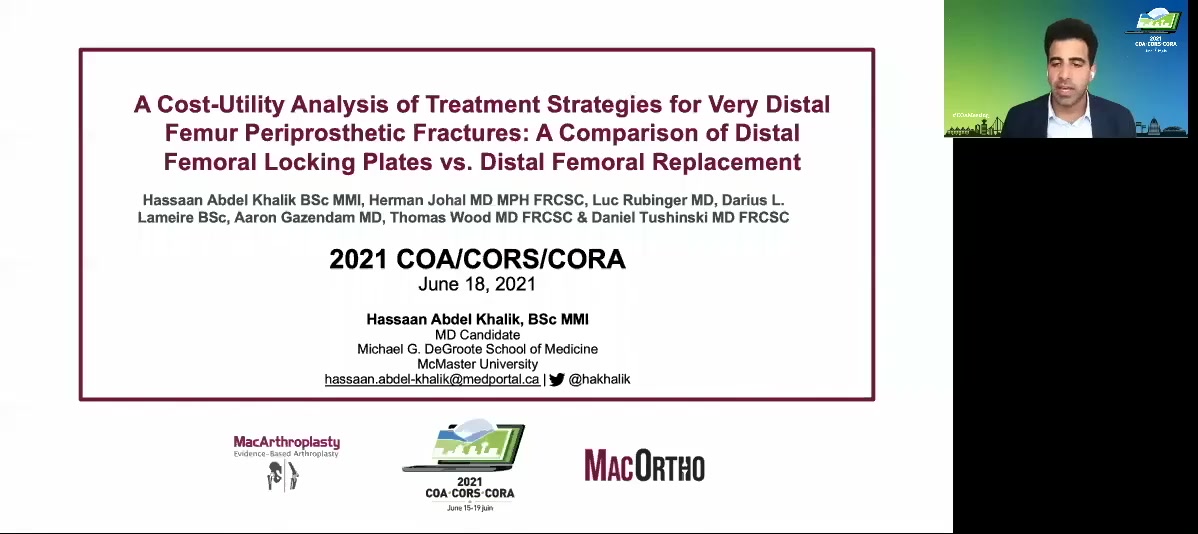Please login to view this media

- Talk
- 15/09/2021
- Canada
A Cost-Utility Analysis of Treatment Strategies for Very Distal Femur Periprosthetic Fractures: A Comparison of Distal Femoral Locking Plates vs. Distal Femoral Replacement
Description
In this presentation, Hassan Abdul Khalik, an incoming orthopedic surgery resident at MacOrtho, discusses his research on the cost-utility analysis of treatment options for very distal femur periprosthetic fractures. He compares the conventional distal femoral locking plates (DFLP) with distal femoral replacement (DFR) methods. Khalik outlines the clinical management protocol for handling these complex fractures, emphasizing the growing acknowledgment of DFR as a viable treatment alternative alongside more established DFLPs.
The presentation highlights the advantages of both methods, detailing DFLP's superior functional outcomes and cost-effective implant options, while DFR reduces revision rates and hospital stays. Khalik employs a health economic modeling approach to assess which treatment offers better long-term patient outcomes and cost-effectiveness, focusing on the incremental cost-effectiveness ratio (ICER).
He presents a model constructed around a geriatric population scenario, analyzing data from systematic reviews and local databases. Key findings reveal that while DFR may be cheaper in the long run, DFLP proves more cost-effective due to its higher quality-adjusted life years. Additionally, sensitivity analyses suggest that significant increases in mortality among DFLP patients or substantial improvements in DFR outcomes would be necessary to alter the conclusions regarding cost-effectiveness.
Khalik concludes that DFLP is currently the more cost-effective strategy despite DFR's lower costs over time, but emphasizes the need for further quality data and rigorous studies to validate these findings.